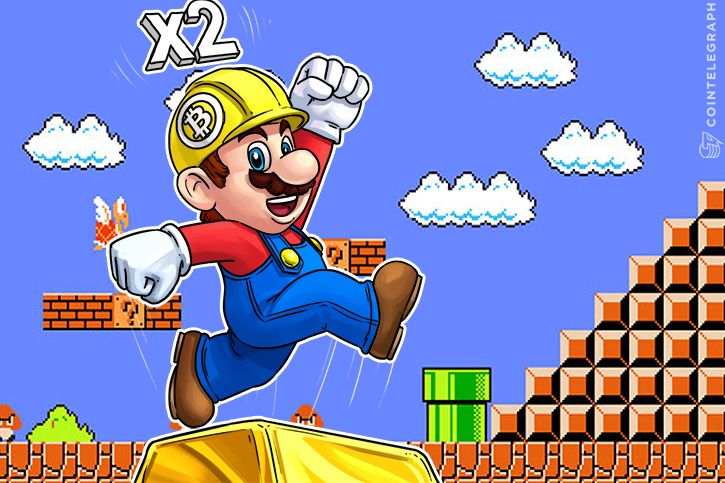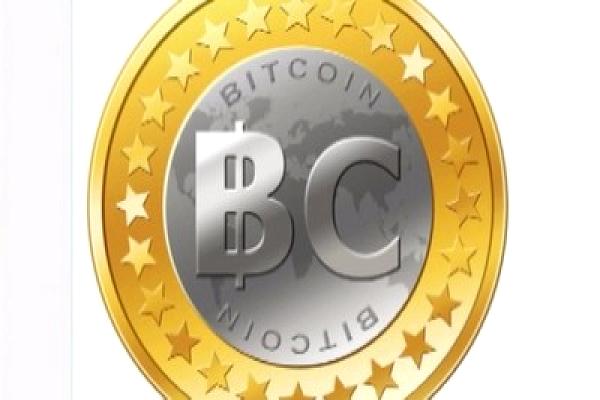A Step By Step Guide to Inbound Marketing Strategy
 Are you new to inbound or think your current campaigns could use some direction?
Are you new to inbound or think your current campaigns could use some direction?
Over at OverGo we’ve come up with a pretty foolproof and seamless process of creating a marketing strategy. It’s really quite simple, all you need to do is set the goals, create the basics, automate the processes, and analyze the results. Let’s dig deeper!
Setting Goals
The first step to creating an inbound marketing strategy is to define your business goals. Based on where you are and where you want to go, it’s important to create a roadmap of how to get there. Along with this road you can define the KPIs that tell you how your inbound marketing campaign is doing. You can look at your competitors, your industry market, and where you are in that market to create realistic and attainable goals.
Discovery Session
The first step in setting a direction is to set customized goals during a discovery session. Conducting a meeting with you and your team to identify your ideal customers is the best way to go about this. In this meeting, you can discuss your key metrics, revenue goals, and your sales process to produce the best-customized strategy.
Create a Buyer Persona
A deeper understanding of your audience provides direction for the content you create and keeps your visitors coming back for more. You can create a research-based representation of who your buyers are, what they want to accomplish, pain points that shape their behavior, and how they make buying decisions.
Industry Research
An understanding of your competitors and what other companies are doing in your industry is ideal. You can pinpoint your specialty and see where the holes are in your industry that could be filled.
Getting Found
Keyword Research
Once we get an understanding of your audience, it’s important to find out how people are searching for your content through keyword research. This allows you to see the estimated global and local search volume, ranking difficulty and also predicts the cost of running paid campaigns. Through this research, you can decipher which terms and phrases to target in order to attract the right visitors to your website.
Onsite SEO
This consists of all the factors on a website page that influence search engine ranking. In order to get found for the keywords that are chosen in your keyword strategy, it’s important to optimize every page that is created on your website. All pages should include the appropriate keyword within the content, page properties, and the image tags. Performing onsite SEO for all current and future pages that you build out for your website is very important.
Editorial Calendar
Before beginning your blogging campaign, come up with an editorial calendar to ensure that you are publishing and promoting content on a regular basis. An editorial calendar will not only make it easier to schedule content, capitalize on upcoming product or service launches, but it will ultimately encourage discipline in the running and updating of any blog.
Blog Writing, and Posting
Blogging is the basis of bringing traffic to your website and relevant visitors will come to your site when you blog about the right content. The key is to create content around your buyer personas pain points and main industry topics. Keeping up with blogging is a high priority in getting your website found online, the more frequent you blog the more visitors you will attract.
Pay-Per-Click
PPC campaigns give you an opportunity to put your message in front of an audience that is seeking your product or service. Through keyword research, strategic bidding, and a compelling advertisement you can get the results you want. PPC is no longer limited to search engines, you can also run PPC campaigns on various social media platforms.
Social Marketing
Social media is THE platform for sharing content and odds are your audience is engaging on at least one social media platform. Sharing content on your social media accounts allows you to reach your audience on multiple channels- Facebook, Twitter, Google+, LinkedIn. Social media acts as a gateway for potential prospects to find your website so it is important to be relevant, active and engaging in this sphere.
Getting Leads
Premium Content Production
Premium content converts visitors to leads on your website. Specifically, premium content is an offer that contains unique informational value to your target audience. Visitors are willing to fill out a form with their contact information in order to gain access to your premium content. Examples of premium content are eBooks, Webinars, Whitepapers, Case Studies, etc.
Landing Page Design
Landing pages are where premium content lives. Sending your potential clients to landing pages where you capture their information and create new leads for your sales team is a best practice. A good landing page is eye-catching, properly designed, and attracts new leads. The basis of a good landing page is to have the desired user action, which is what you want your visitors to do once they land on your page.
Call-to-Action Creation
A call-to-action (CTA) can make or break your website's lead acquisition rate. CTA's direct visitors to your premium content landing pages. We work with the branding of your website in order to create professional and exceptional graphic buttons your visitors will be compelled to click. We think of CTA as mini billboards positioned on your website to direct visitors to the next steps you want them to take. To facilitate lead generation you can design A/B CTA test groups and position them on various pages throughout your website.
Acquiring Customers
Alignment of Sales and Marketing
Utilizing CRM integration allows you to provide your sales team with information that will make them better equipped for sales calls. With CRM systems you can track every action a lead takes on your website, your email marketing and on social media. This kind of information puts your sales team one step ahead on a sales call. They will be able to prepare themselves for the type of product or service the lead is interested in, and build on the trust the lead has already established with your business.
Lifecycle Communications
Getting to know your potential clients better is also important by creating a lead lifecycle plan based on your website content and sales funnel. Lifecycle plans segment leads based on who they are, how much interaction they've had with your business online, what kind of content you want them to receive, and at what part of the sales funnel you want them to receive it.
Lead Nurturing
The best way to move a lead through a sales funnel is to launch lead nurturing campaigns. You can do this with a workflow which allows you to trigger a follow-up email or a series of emails based on the action that a lead may take. This helps nurture and educate leads so they are prompted to take next steps and prepared before they even talk to a sales person.
Automated Workflows
Workflows are more than just a lead nurturing tool. They help you automate common marketing processes, moving leads through your funnel in an efficient way. Sending marketing emails, changing contact properties, and sending internal notification emails, are all possible with workflows. They bring marketers the same kind of automation a sophisticated CRM system provides to sales, bridging the gap between both processes.
Closed-Loop Reporting
Closed-loop reporting gives sales an opportunity to report on what happened to the qualified leads we provided, helping further understand your best and worst lead sources. With closed-loop reporting, you are able to plan more strategically for the future by focusing on your best lead sources, those with the best lead to customer conversion rate.
Retaining Customers
Closing sales and getting customers are great goals to have. But I think the inbound marketing mentality supports the fact that the relationship with your customers doesn’t need to end there. After you bring in leads from online tactics you can focus on turning customers into promoters of your business. After all, the best advocates of your products or services are those that have experience with them. Options for continued retention processes include implementing referral programs, continued customer education pieces, and segmenting customer newsletters in order to keep your customers coming back for more.
Continued Education Pieces
Inbound allows you to segment your customers into lists based on their needs and implement marketing automation. You can communicate information on any additional needs they may have as a customer. Perhaps there is an opportunity to cross-sell but your customer was not aware of it, these communications will make sure they are well educated on the full scope of your products and services.
Segmented Customer Newsletters
Newsletters aren’t just for leads and potential customers; you can send segmented customer newsletters so they continue to see you as experts in your industry. Customers receive newsletters that contain updates on current events in your industry, as well as press releases and product and service announcements.
Referral Programs
A referral customer comes at a much lower cost and has a higher potential for retention and loyalty. If applicable for your business, you can create referral programs that make it easy for current customers to promote your product or service.
Account Analysis
Marketing Benchmarks
Always analyzing your main marketing benchmarks is key. These metrics include customer acquisition cost (CAC) and ratio of customer value to CAC which is the total value that your company derives from each customer compared with what you spend to acquire that new customer. You can also look at the time to payback CAC which is the number of months it takes for your company to earn back the CAC it spent acquiring new customers, marketing originated customer percent which shows what new business is driven by marketing, and the marketing influenced customer percent which takes into account all of the new customers that marketing interacted with while they were leads anytime during the sales process.
Onsite Analysis
Consistently performing a full onsite analysis of your website is also important. You do this by looking at keyword performance and rankings, organic search traffic and conversions, search engine optimization, blog performance, page performance, email click-through-rates, and much more.
Offsite Analysis
The offsite analysis goes hand in hand with onsite analysis. You can perform an offsite analysis which is the measurement and analysis of your online presence away from your website. This includes paid search campaigns, social media accounts and paid social campaigns.
Monthly Reporting
Lastly, you can keep track of your unique business goals with in-depth reports based on your custom key performance indicators. Your reports are designed to foster communication and collaboration within your company so customizing it to your goals and with your sales and marketing teams is very necessary.
Takeaway
Setting up your strategy the right way might take a little bit of time, but in the end, it’s worth it and will produce the type of results that turn into leads and customers for your marketing and sales teams! If you want to learn more about how this can be applied to your business, I invite you to download our resource below!
Chuck Reynolds
Contributor
Please click either Link to Learn more about — Inbound Marketing.
Alan Zibluk Markethive Founding Member











